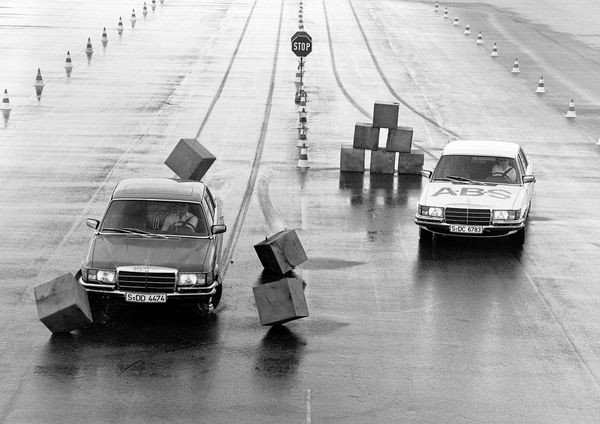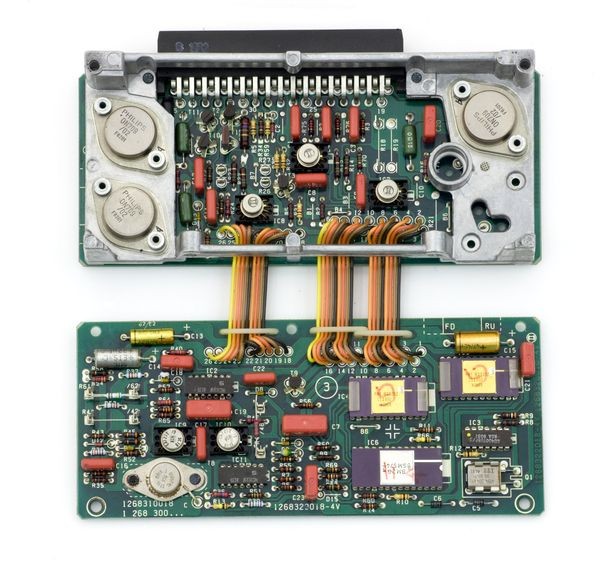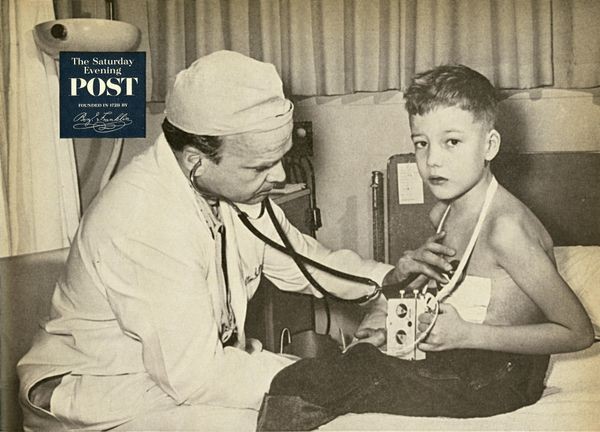Real-Time All the Time
Diagram of electronic components in a car
Most of the electric motors, electronic controls, safety, entertainment and convenience features in passenger cars are controlled by computers. The traditional wire harness now also includes a digital communications network.
Real-Time All the Time
When you step away from your computer you’re probably still using a computer. Faster, more powerful processors—and the shrinking cost and size of microelectronics—make it ever easier to integrate computers into our daily lives and household products.
Computerized monitoring and control systems bring new efficiencies and capabilities. They also bring new risks as we grow more dependent on them.
Mercedes-Benz ABS test
Anti-lock brakes’ biggest advantage isn’t shorter stopping distance—it’s control. When car wheels don’t lock up, drivers remain in command. However, relying on the ABS took some getting used to for drivers.
View Artifact DetailFast Calculations to Slow You Down: Anti-Lock Brakes
Early auto engineers faced a challenge. To brake a car, they needed to slow its turning wheels. But if the wheels stop turning entirely, drivers lose control.
They began exploring solutions in the 1920s. By the 1950s, mechanical-hydraulic systems were available. Teldix demonstrated an electronic Anti-lock Brake System (ABS) in the 1960s. But the braking breakthrough came with practical digital electronics in the 1970s, offering reliability, swift calculations and system-wide integration.
ABS’ impact has been vast. Individual drivers are part of a larger system — traffic — so safer braking for one means improved safety for all.
Bosch ABS-2 Controller
The computerized ABS controller is only one part of the anti-lock brake system. It receives speed and acceleration information from wheel sensors and activates solenoid valves in the braking system. All components must endure harsh environmental conditions.
View Artifact DetailTaking Computers to Heart: Electronic Pacemakers
With continual advances in fast, affordable, miniaturized processors, computers are not only all around us, some of them are in us.
Doctors in the 19th century discovered that they could stimulate heart muscles electronically. By the 1950s, medical researchers had developed implantable pacemakers to monitor and stimulate heartbeats. But the first one lasted only three hours, and it took years to achieve reliability.
Microprocessors in the 1980s brought reliability and greater flexibility. Both chambers of the heart could be stimulated, and at a rate that depended on physical activity.
Dr. C. Walton Lillehei inspects David Williams’ pacemaker
Early pacemakers were external. Medtronic founder Earl Bakken designed one in the late 1950s that used silicon transistors. Its controls were in the box; implanted electrical leads connected to the heart muscle.
View Artifact DetailCordis Sequicor and Gemini cardiac pacer demonstration model
The Cordis Sequicor I was an early software-controlled, microprocessor-based pacemaker. Using the RCA 1802 processor, it was flexible enough to regulate both heart chambers individually, though its service life was only two years.
View Artifact Detail



